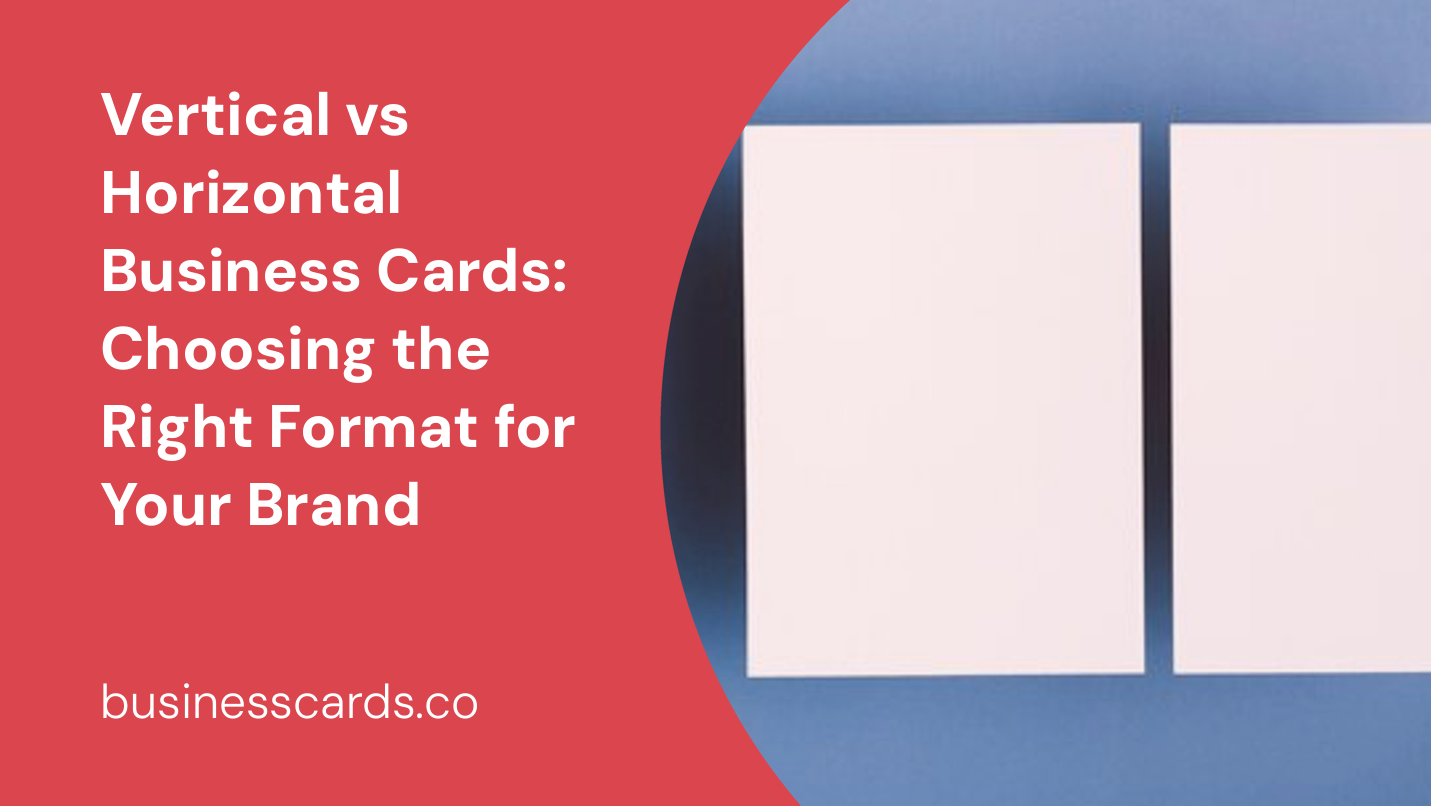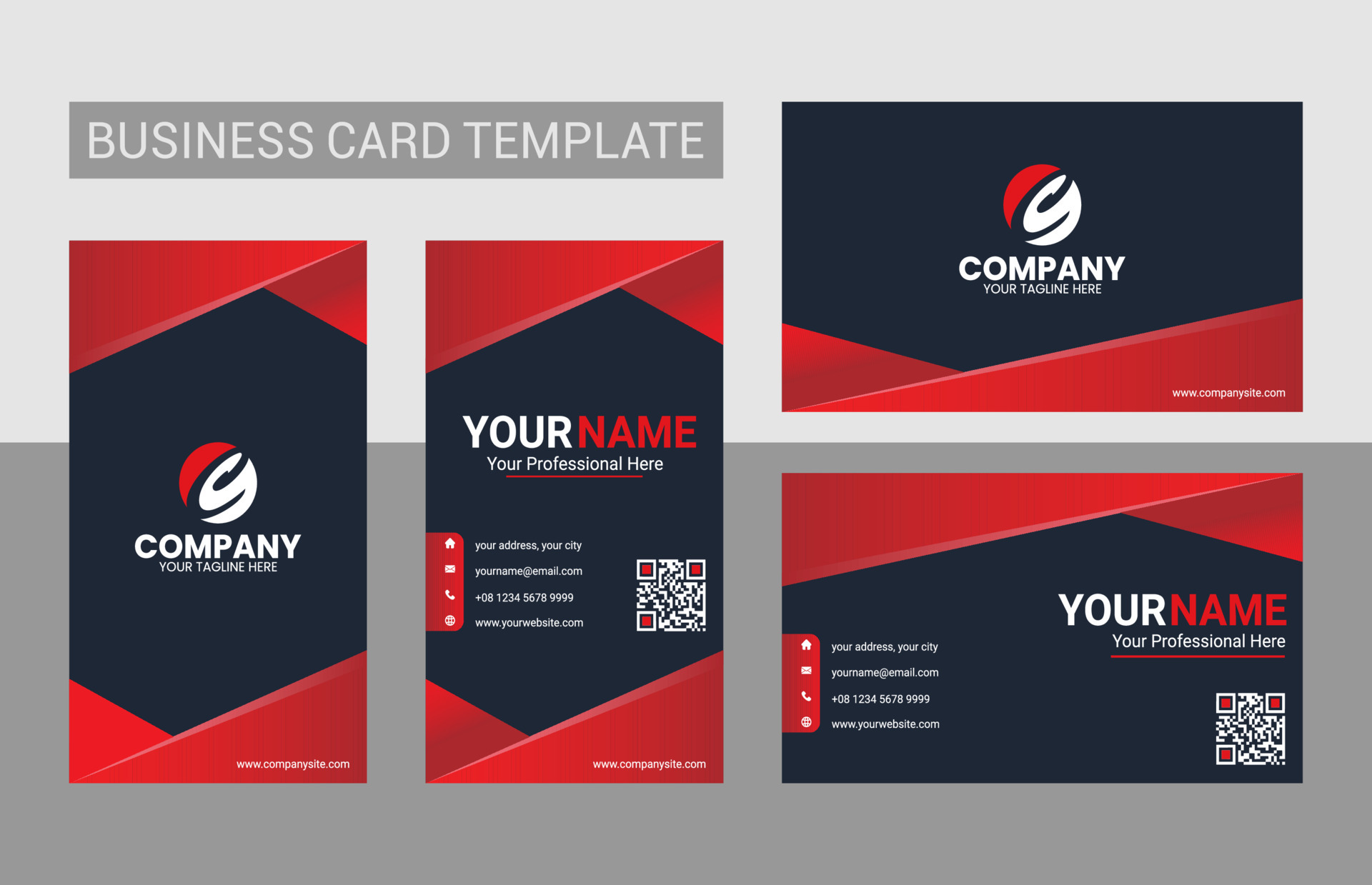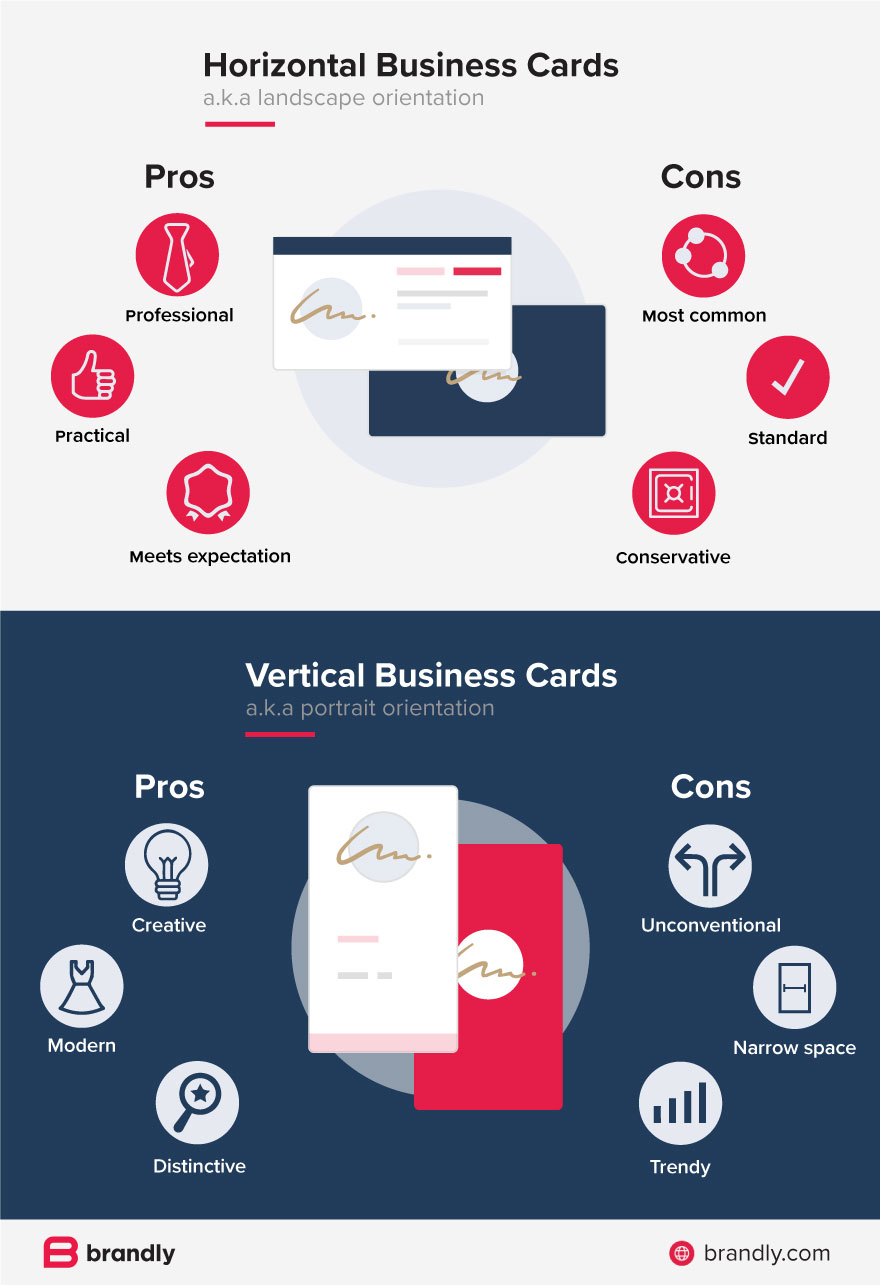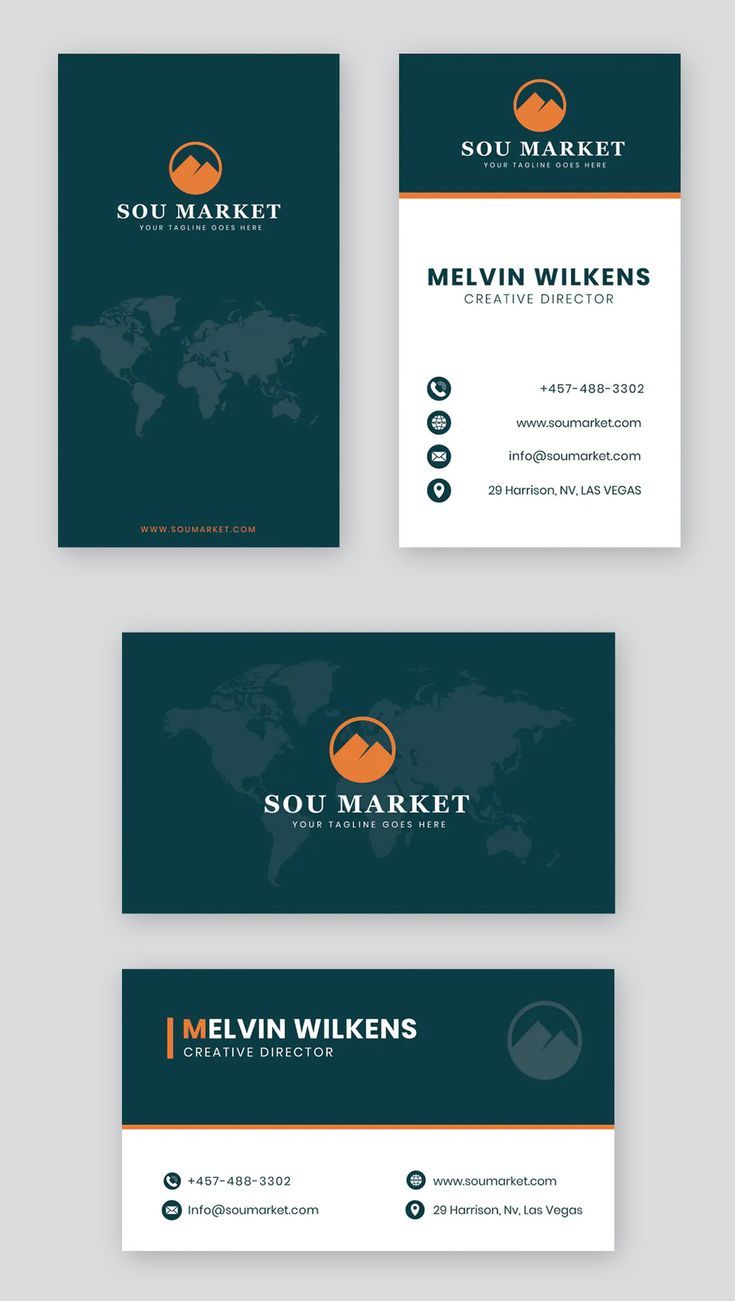
Whether you’re attending networking events, meeting potential clients, or simply want to leave a lasting impression, business cards play a pivotal role in your personal and professional branding. When it comes to creating an impactful business card, one important decision to make is whether to opt for a vertical or horizontal format.
In this article, we’ll explore the key differences between vertical and horizontal business cards, their advantages and disadvantages, and ultimately help you choose the right format for your brand.
Understanding Vertical Business Cards

Vertical business cards, as the name suggests, are oriented in a portrait orientation. This means that the longer side of the card runs vertically, while the shorter side runs horizontally. Vertical business cards offer a unique and unconventional approach to traditional card designs.
Benefits of Vertical Business Cards
- Stand out from the crowd: Vertical business cards immediately catch the eye due to their distinctive orientation. In a sea of horizontal cards, a vertical design can create intrigue and make your card more memorable.
- Ample space for creativity: The vertical format provides a larger canvas for creative design elements, allowing you to showcase your brand’s personality and stand out from the competition. You can experiment with unique layouts, illustrations, or patterns that may be more challenging to incorporate in a horizontal card.
- Emphasize hierarchy: With the vertical format, you can easily utilize the layout to emphasize important details. For instance, you can position your logo or business name at the top, followed by your contact information, creating an intuitive hierarchy for recipients to follow.
Drawbacks of Vertical Business Cards
- Fit may be an issue: Vertical business cards may not fit well in standard cardholders, wallets, or card sleeves that are designed for horizontal cards. This could potentially be a limitation if your recipients prefer to keep cards organized in a certain way.
- Less space for information: Due to the narrower width of vertical business cards, you may have less space to include all the necessary information. It requires thoughtful planning to ensure the content remains legible and readable without overcrowding the card.
- Perception as unconventional: While vertical business cards can help you stand out, they may also be seen as unconventional or less traditional. In certain industries or cultural contexts, such departure from the norm might not be well-received.
Exploring Horizontal Business Cards

Horizontal business cards, also known as landscape-oriented cards, maintain the traditional orientation with the longer side running horizontally and the shorter side running vertically. They have been the standard choice for business cards for a long time.
Advantages of Horizontal Business Cards
- Convenience for recipients: Horizontal cards easily fit into standard cardholders, wallets, and card sleeves, making it more convenient for recipients to keep and organize them. This ensures that your card remains readily accessible to potential clients or contacts.
- Well-established tradition: Horizontal business cards have stood the test of time and have become the norm in most industries. Choosing this format can convey a sense of professionalism and conformity, particularly in conservative industries or formal settings where conventionality is valued.
- Clear and organized layout: Horizontal cards provide a clear layout where information can be displayed in an organized manner. There is generally more space available to include contact details, social media handles, or any other necessary information.
Disadvantages of Horizontal Business Cards
- Less visual impact: Due to their traditional format, horizontal business cards might not stand out as much as their vertical counterparts. In settings where many cards are exchanged and retrieved, it may be more difficult for recipients to remember or distinguish your card from others.
- Less room for creativity: The standard horizontal format can limit your design options and make it challenging to incorporate unique or eye-catching elements. While creativity is not necessarily restricted, it might require more finesse to make a horizontal card truly memorable and distinctive.
Choosing the Right Format for Your Brand
When deciding between vertical and horizontal business cards, consider your brand’s identity, industry, target audience, and overall design goals. Here are some key factors to help guide your decision:
- Brand personality: If your brand is known for its creativity, innovation, or forward-thinking approach, a vertical business card may align more effectively with your overall brand identity.
- Industry expectations: Consider the industry you operate in and the expectations of your target audience. In more conservative or traditional sectors, such as finance or law, a horizontal card might be more appropriate to convey professionalism and conformity.
- Information priority: Assess the information you need to include on your card and ensure that the chosen format provides enough space for all the necessary details without compromising legibility or visual appeal.
- Marketing goals: Determine the role your business card plays in your overall marketing strategy. If you’re aiming to create impact and stand out among competitors, a vertical card may provide a more memorable impression.
Conclusion

When it comes to selecting the right format for your business card, both vertical and horizontal options have their pros and cons. While vertical cards can help you stand out and exhibit creativity, horizontal cards maintain a sense of conventionality and convenience.
To make an informed decision, consider your brand’s personality, industry norms, target audience, and marketing goals. By taking these factors into account, you can select a business card format that effectively represents your brand while making a lasting impression on recipients.
Ethan is a branding enthusiast and a master of storytelling. With a background in advertising, he leverages his expertise to explore the art of graphic design and its impact on business. In his free time, Ethan enjoys photography and capturing the world’s visual intricacies.